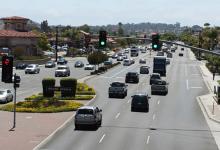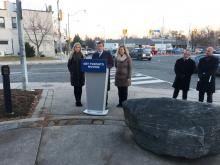The consultant team MPW selected to conduct this study was
• Traffic signal optimisation, Metro Nashville, Tennessee, US
Cost:
• $750,000 (Phase I)
ROI:
• $14,770,900 first year (21:1)
•$46,326,550 over three years (62:1)
Benefits:
•Reduction in traffic congestion for Davidson County motorists
• Environmental improvements - reduction in fuel consumption conditions, identification of potential improvements, the development of timing plans for each period of the day including weekdays and weekend, and field implementation of the proposed timing plans. In addition, the project included the development of MPW's Traffic Signal Timing and Phasing Policy, development and presentation of a two-part training programme for MPW staff, travel time and delay studies, air quality analyses and complete project documentation.
Benefits
Results from the signal timing effort included a 20 per cent reduction in delay for the seven corridors, with the greatest delay reduction of approximately 37 per cent along the Nolensville Pike and Harding Place corridors. Benefits in reduced fuel consumption also were realised with this project. A reduction of nearly six per cent in fuel consumption along the seven corridors was achieved. Furthermore, improvements in air quality were achieved. Volatile organic compounds were reduced by 3 per cent, nitrogen oxides by approximately 1 per cent, and carbon monoxide by nearly 1 per cent.Economic analysis
Based on the results from the delay study, fuel consumption analysis, and the air quality analysis, an economic evaluation was conducted for the project to determine what benefits arose from the implementation of the new signal timing plans. The benefits studied included reduced road user costs from reduced delay experienced by the motoring public, air pollutants and fuel consumption. To determine these economic benefits, Kimley-Horn studied the AM, midday, and PM peak periods of the weekdays. Therefore, economic benefits were not quantified for the non-peak hours of the day and are not reflected in this analysis.
To calculate the cost savings resulting in the reduction of delay by the motoring public, a dollar value was assigned to the delay. The
Economic benefits also were realised for the reduced emissions that resulted from the improved signal timing plans. This was calculated by assigning a cost to each of Economic analysis the three pollutants, as documented by the Federal Highways Administration. For the entire project over a one year period the benefit was found to be $33,655.
Similarly, the economic benefit was determined for the reduced fuel consumption. A conservative value of $2.00 per gallon of fuel was used for this analysis. For the whole project, this was found to be $637,630 for a one-year timeframe.
By using an engineering fee for this project, a benefit-to cost ratio was calculated. The benefits were the sum of the delay, emissions and fuel benefits over a one-year timeframe totaling $15,442,180. The cost was the contract value for the project: $750,000. This yielded a one year benefit-to-cost ratio of 21:1. However, the implemented signal timing plans will be used and prove to be beneficial for a time period longer than one year.
Typically the useful life for signal timing plans is three years, as recommended by the ITE ("At a minimum, an operating agency should budget to retime traffic signals at least every three years.") Therefore, the three-year benefit is $46,326,550, while the cost remains only $750,000. This yields a three-year benefit-to-cost ratio of 62:1.
RSS









